
Pickleball Techniques and Strategies: from Beginner to Champion
From Beginner to Pro: Ace your Play with our Pickleball Techniques & Strategies to Dominate the Court in your Next Game.
Hello, dear Pickleballers and curious beginners alike! Welcome to the exciting world of Pickleball footwork. Success in Pickleball is not only determined by your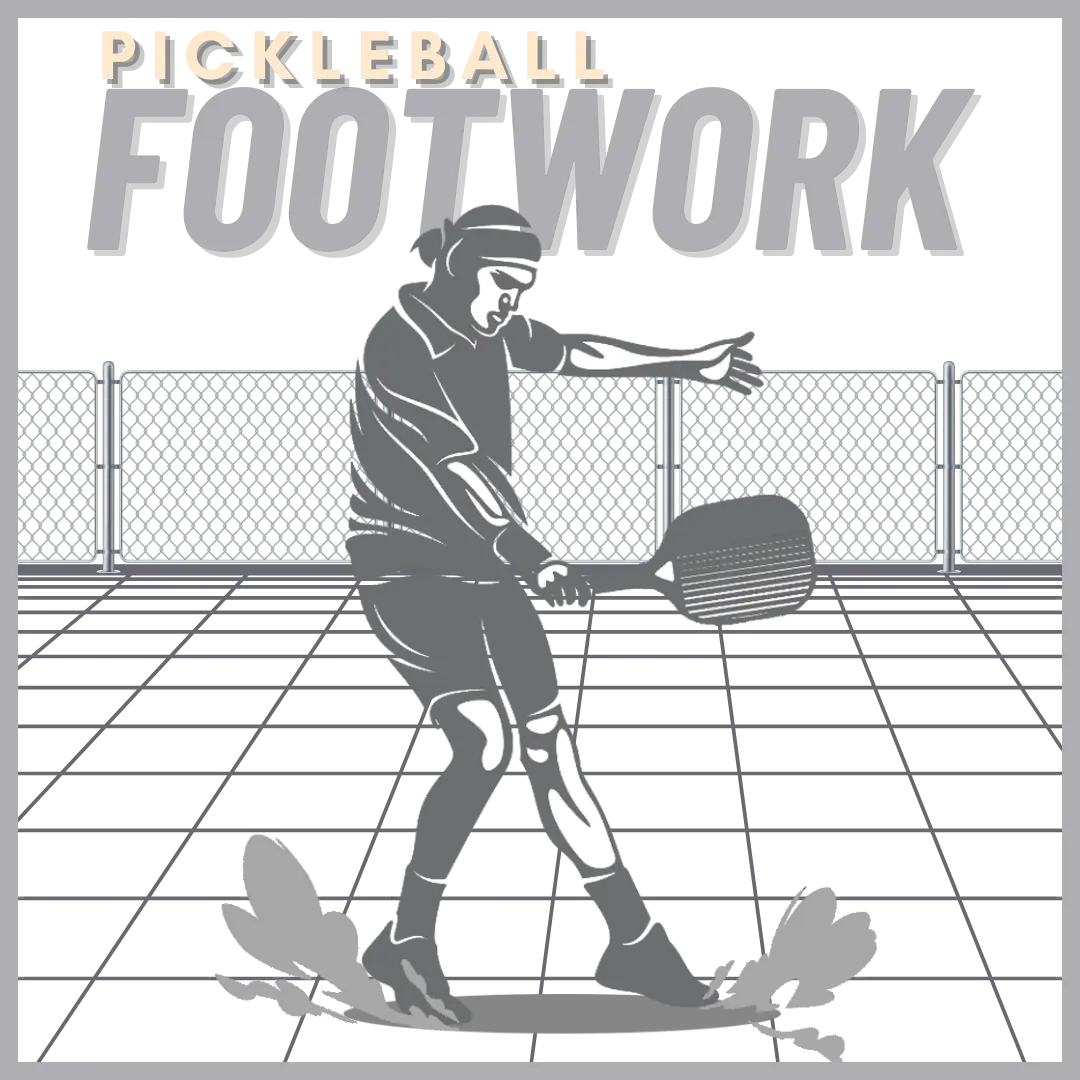 paddle skills but also begins with your feet.
paddle skills but also begins with your feet.
Whether you’re an experienced player looking to improve your skills or someone taking your first steps onto the court, understanding the importance of footwork in Pickleball is critical for success. Pickleball offers a wide range of health benefits, so the better your game, the better the benefits in the long run too! In this blog, we’ll jump into the basics of Pickleball footwork. We’ll also explore strategies and techniques that can make you a better player.
Have you ever noticed that some players glide around the Pickleball court effortlessly, while others look like they’re stumbling? Have you ever been frustrated when you couldn’t get to the ball or felt like you were in the wrong place during a game? You’re not the only one! Whether you’re here to pick up the Pickleball basic rules, or you’re looking to refine your skills, our journey into the world of Pickleball footwork promises to be both informative and enjoyable.
Don’t forget about the friendly Pickleball community! This game is not only about footwork but also being part of this vibrant community.
1. Flexibility – In Pickleball, since the court is smaller than a tennis court, being fast and sharp is important. Exceptional Pickleball players are known for their quick movement and ability to change direction swiftly. Therefore, good footwork helps you move around the court effectively, making it tough for your opponent to find openings in your defense.
2. Positioning – If you’re familiar with the phrase “timing is everything.” That’s what good Pickleball footwork is all about. By being in the right spot, it helps you reach the ball, make precise shots, and set the rhythm of the game. Furthermore, footwork is the secret to finding that ideal spot at the right time. It lets you predict your opponent’s actions, prepare for a strong shot, and keep a strategic edge throughout the match.
3. Balanced Play – Good footwork is essential because it ensures you maintain a balanced stance while playing. This balance, in turn, helps you control your shots, respond to surprise returns, and avoid unnecessary falls or collisions, significantly reducing the risk of injuries. Likewise, maintaining a stable posture is important for Pickleball players. Not only will it allow you to react swiftly to your opponent’s shots but also execute your own shots with accuracy.
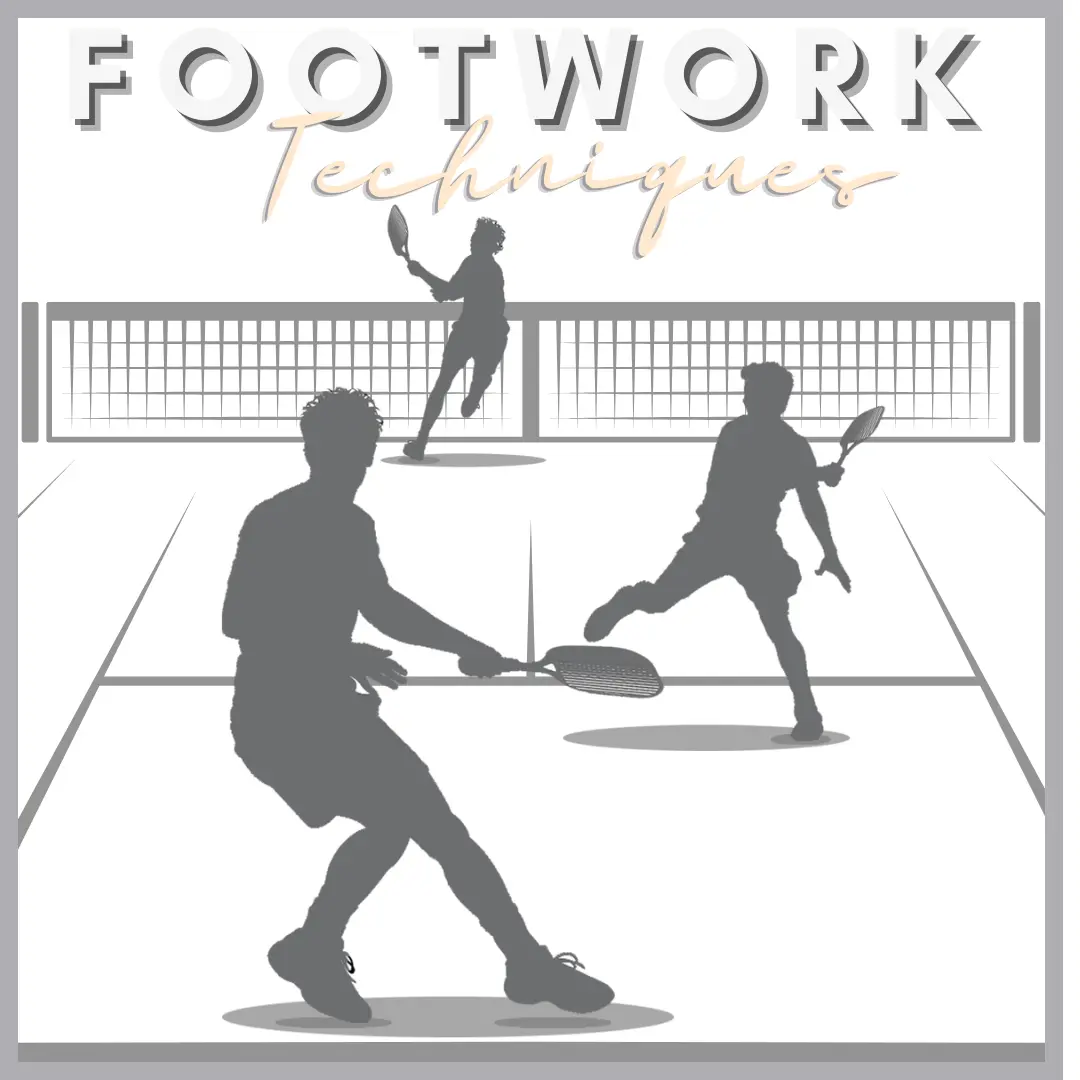 1. Split Step – The split step requires players to make a rapid, slight jump while keeping their feet shoulder-width apart and balancing on the front part of their feet. This posture allows players to respond quickly to their opponent’s shots and therefore, move effectively. As a result, this improves reaction time and makes players more ready to change direction quickly in the game.
1. Split Step – The split step requires players to make a rapid, slight jump while keeping their feet shoulder-width apart and balancing on the front part of their feet. This posture allows players to respond quickly to their opponent’s shots and therefore, move effectively. As a result, this improves reaction time and makes players more ready to change direction quickly in the game.
2. Side Shuffle – Pickleball players use a side-to-side shuffle step to move laterally along the baseline or sideline. By doing so, this footwork technique allows players to cover more ground quickly and maintain their balance while staying ready to hit the ball. Consequently, this leads to enhanced lateral movement and court coverage.
In Pickleball, using the cross-step technique is a helpful way to move quickly from the Non-Valley Zone to the rear of the court. Not only does it allow players to move but also changes direction efficiently while maintaining their balance. It proves especially useful for transitioning between forehand and backhand shots, ultimately facilitating smooth transitions between these two shots during the game.
4. Split-Step and Run -The Split-Step-and-Run technique is a dynamic way to respond to your opponent’s shots. After performing a split step, players can start running by taking several quick steps toward the Pickleball net or the backcourt to reach a lob. This footwork technique not only helps players quickly cover the court and respond to different types of shots but also enables quick movement to the net or when chasing down lobs.
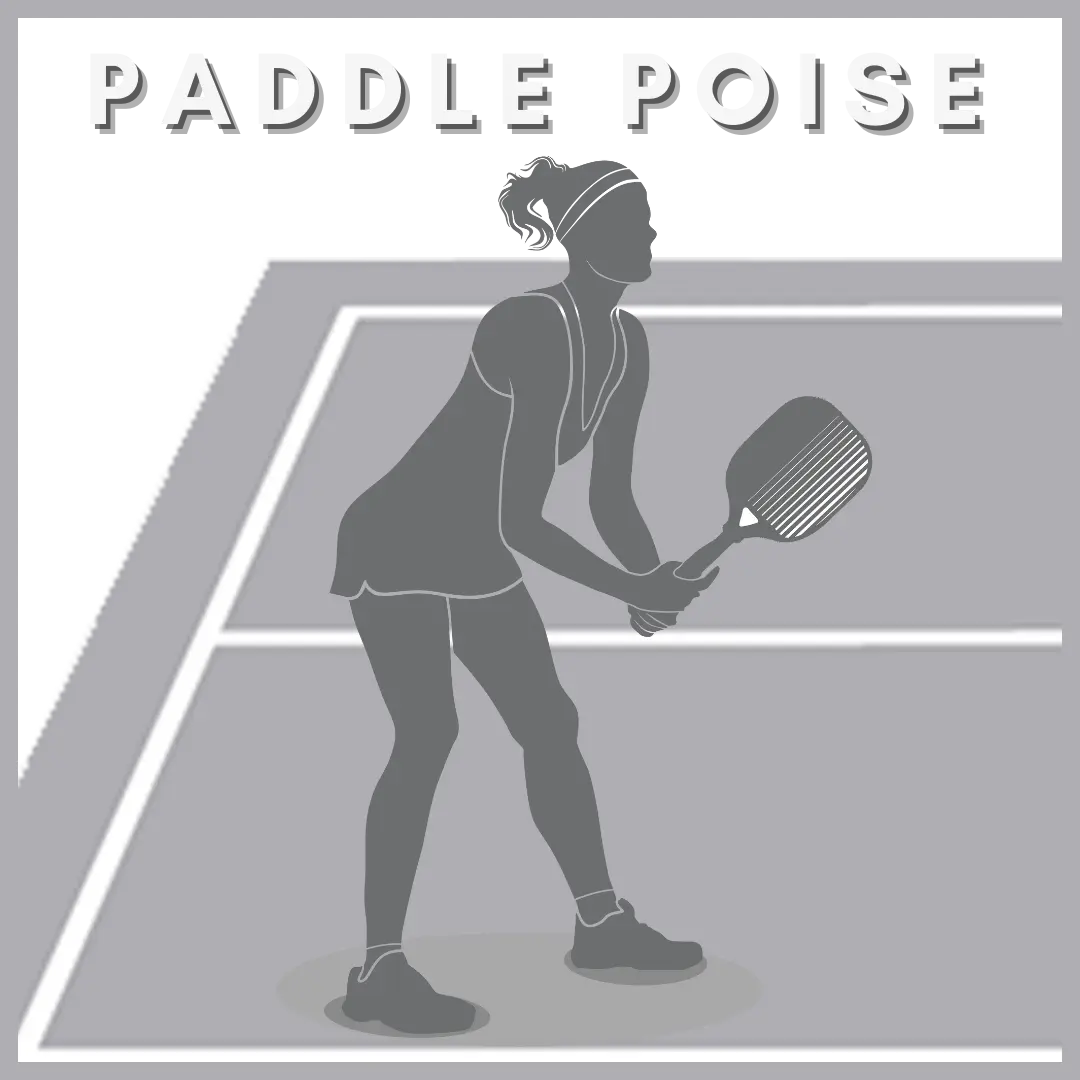 Paddle poise refers to how players position their paddle to prepare for shots and react to their opponent’s move effectively. By maintaining a balanced and ready position with the paddle, players can make precise shots and effectively control the direction and speed of the ball during a game. Hence, will result in better balance and control during shots.
Paddle poise refers to how players position their paddle to prepare for shots and react to their opponent’s move effectively. By maintaining a balanced and ready position with the paddle, players can make precise shots and effectively control the direction and speed of the ball during a game. Hence, will result in better balance and control during shots.
1. Improved Shot and Court Coverage – With proper footwork, you can be in the ideal position to perform a range of shots – such as smashes, lobs, or dinks and drives, – thus giving you the upper hand in rallies. Quick court coverage stems from efficient footwork and allows players to quickly cover the court, letting them reach shots that would otherwise be too far.
2. Improved Flexibility and Quick Responsiveness – Better footwork boosts flexibility while helping you shift directions quickly and respond fast to your opponent’s shots. Similarly, this can give you a competitive edge by helping you get to the right spot swiftly and make correct shots.
3. Reduced Errors – Additionally, by improving your footwork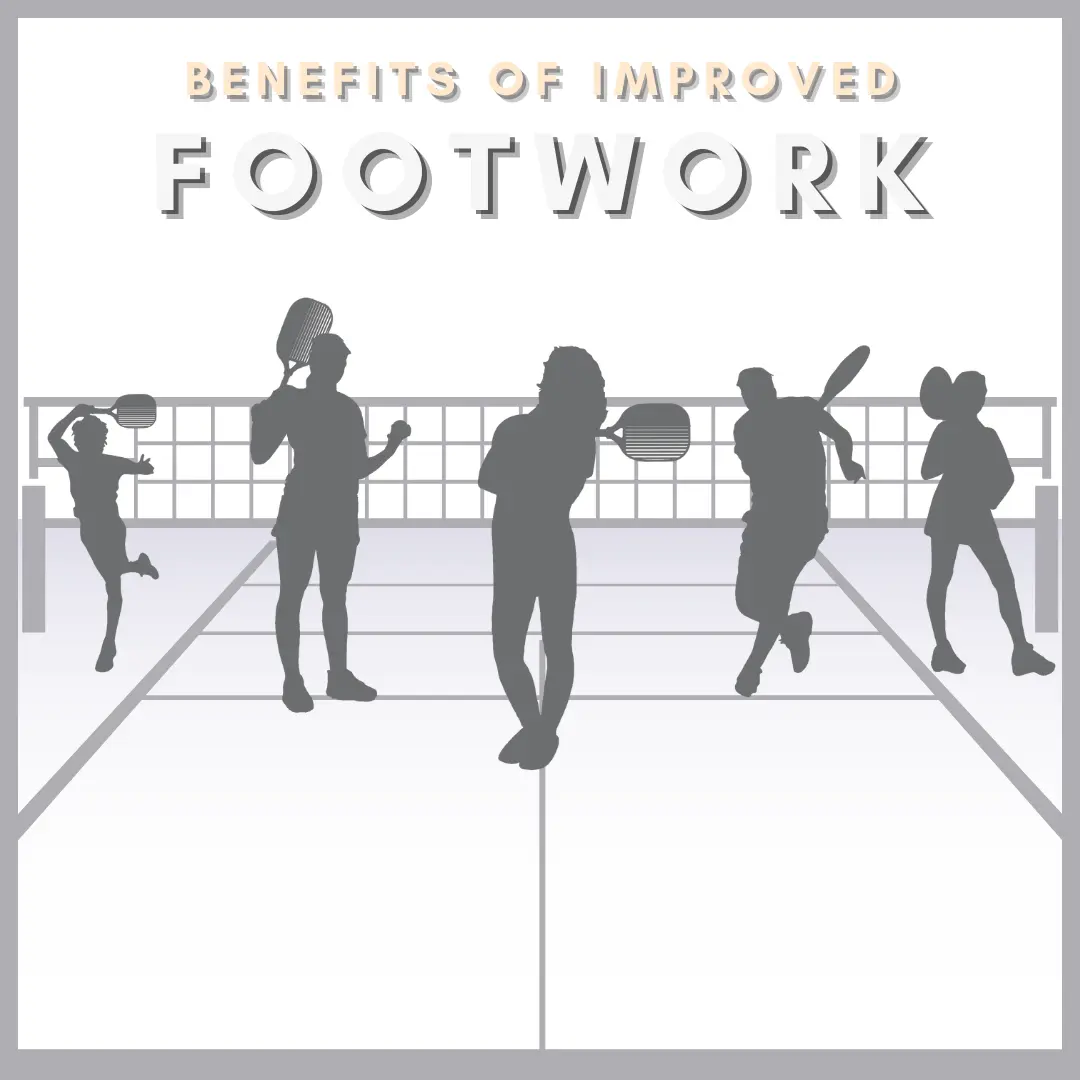 , you’ll gain better balance and control over your shots. This ultimately lowers the chances of making avoidable mistakes because you’ll become more steady in where you hit the ball.
, you’ll gain better balance and control over your shots. This ultimately lowers the chances of making avoidable mistakes because you’ll become more steady in where you hit the ball.
4. Better Defense – Proper footwork helps players maintain balance and stability which results in more accurate shots and better control of the game. Furthermore, good footwork allows players to position themselves well for different shot types such as volleys, drives, and lobs.
5. Injury Prevention – Moreover, by using solid footwork techniques, players can avoid excessive effort and reduce the chance of getting hurt, as they move with control and balance.
6. Energy Efficiency – Smart footwork saves your energy during matches and helps you move around the court more easily. As a result, it reduces tiredness and enables you to maintain your performance during longer games and tournaments.
 Remember that success in Pickleball depends on your footwork. By mastering it, you’ll not only play better but also have a healthier, injury-free experience on the Pickleball courts. Stay quick, and balanced, and keep smashing those Pickleballs with power.
Remember that success in Pickleball depends on your footwork. By mastering it, you’ll not only play better but also have a healthier, injury-free experience on the Pickleball courts. Stay quick, and balanced, and keep smashing those Pickleballs with power.
In short, every Pickleball player, no matter their skill level, must learn and perfect basic footwork techniques. These techniques matter because they help you cover the court well, make better shot choices, maintain balance, and perform better overall.
Now, we’re curious, dear readers: How much do you value footwork in your Pickleball matches? Have you personally experienced the benefits of avoiding injuries while playing? Please share your thoughts, stories, as we all work together to realize the full potential of this exciting Pickleball sport.
You may also visit USAPA’s Official Rulebook if you need further info about the Pickleball game.

From Beginner to Pro: Ace your Play with our Pickleball Techniques & Strategies to Dominate the Court in your Next Game.

Step into the spotlight, make a lasting impression, and become a trendsetter on the Pickleball court with our Pickleball apparel guide.

Thinking about the perfect gift for someone just starting in Pickleball? Discover our Pickleball gift guide tailored for beginners. Look no further.

Ever wondered how your Pickleball style could reach new heights? Learn the secrets of success with the “Pickleball Accessories To Enhance Your Play and Ace Your Style”.
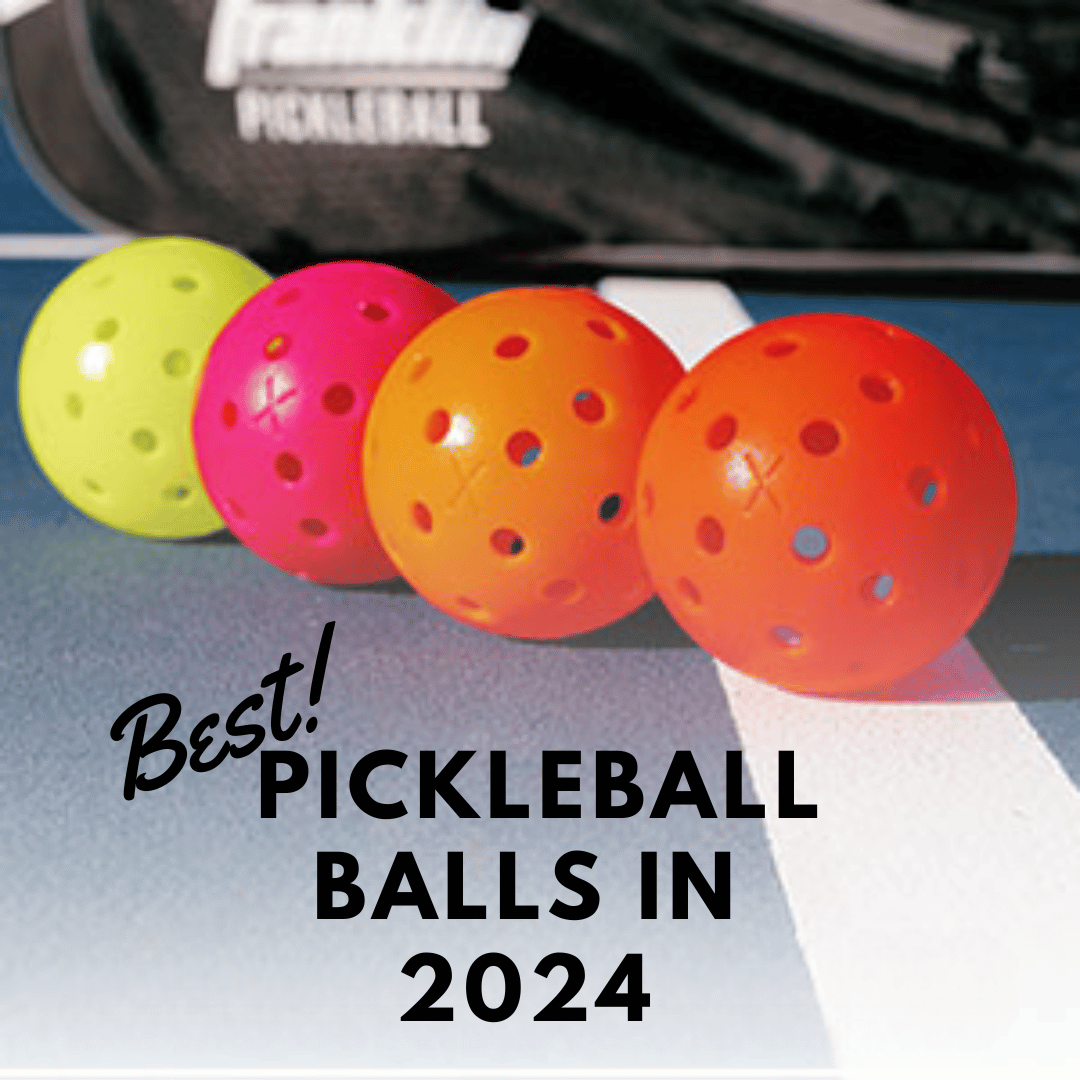
Are you seeking the perfect Pickleball balls for 2024? Let’s find out why they’re the “Best Pickleball balls for 2024”.

Looking to boost your pickleball skills? How can Pickleball Machines serve as your secret weapon?
Meanwhile, if you would like us to feature your brand in our upcoming Pickleball blogs, Collaborate with Us. We’d love to have you featured.